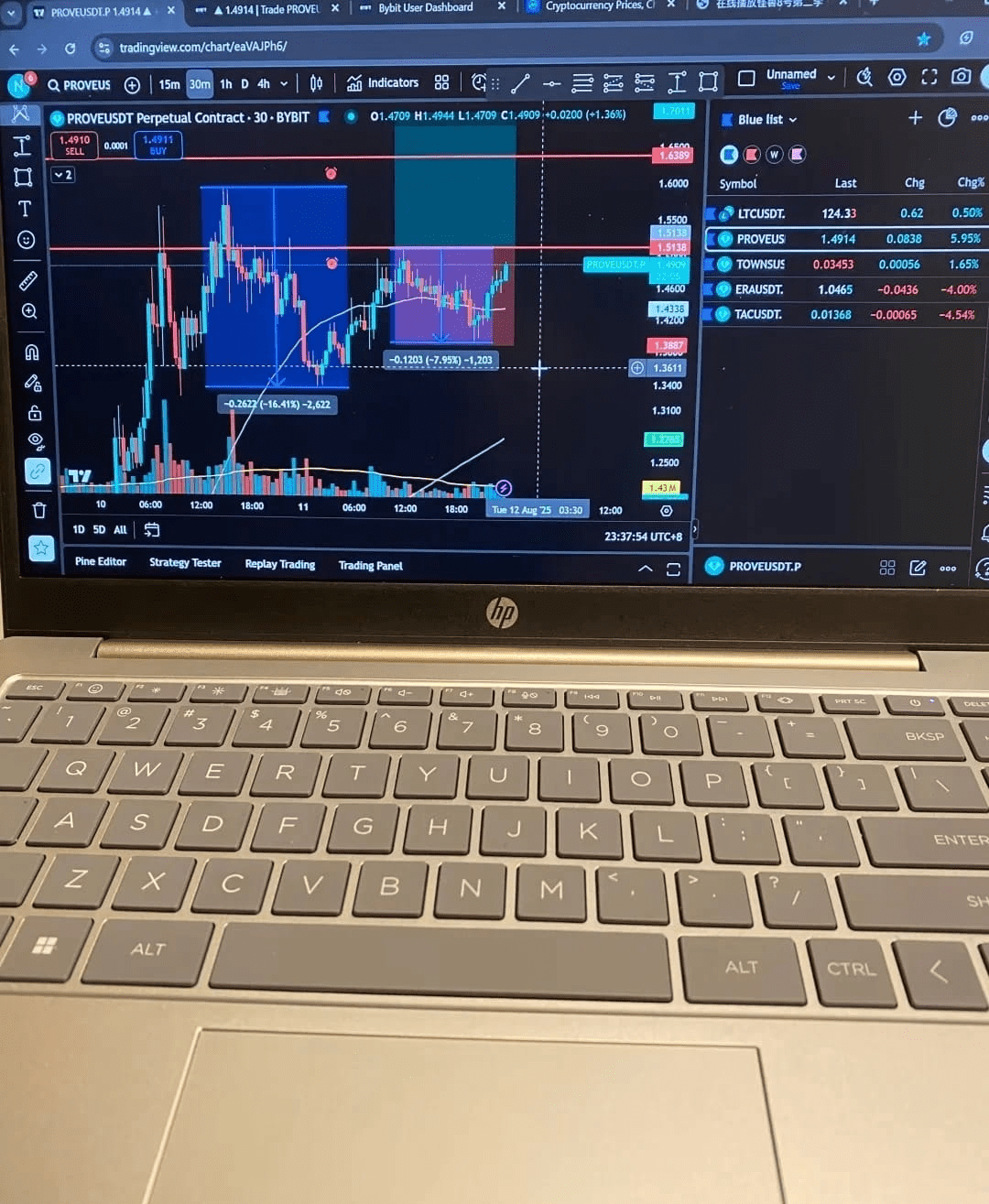At the beginning of the month, I took on a 'hard task'—— using 1000U to operate with friends, and ended the month with an account at 25000U. The whole process relied on strategy, not luck, breaking down each step so that even a novice could follow along.
First week: use 200U to practice 'survival instinct'
Core objective: let your hands learn that 'cutting losses is more important than making profits'
Take 200U to trial trade, select two medium-cap coins (avoid the stagnant waters of large caps and the risks of small coins)
The first drop is 3%, directly cut, a loss of 6U (Remember: the cost of trial and error must be controlled within 5%)
The second rises 12%, first take half profit (lock in 50% profit, let the remaining profit run)
One week later, the account is at 1106U—— not much profit, but the key is to develop the muscle memory of 'acting when the time is right'
Second week: seize sector hotspots, diversify to hit a 'combination punch'
Core objective: use profits to roll profits, with capital hidden in a safe zone
Focus on the public chain ecosystem sector (at that time, a certain public chain had just announced an upgrade, and funds were clearly rushing in)
The first batch of 300U entered the leading token, rising 20% first lock in half of the profit (profits secured, capital becomes 'risk-free')
Use the profits earned to add positions in tokens that are catching up (the key to this step: use market money to gamble, even if you lose, you won't mind)
Tokens catching up earn another 15%, directly pushing the account to 3800U—— friends have gone from hesitation at the beginning to decisively following orders at this point
Third week: switch tracks and roll positions, seize 'opportunities before positive news lands'
Core objective: learn to 'fish where there are many fish'
Clear out old positions that have risen over 50% (don't be greedy for the last penny, a big rise must have a pullback)
Shift investment to DeFi projects that are about to launch new features (before the good news lands, funds love to speculate on expectations)
Buy in two batches when it pulls back to the support level (first buy 60%, if it drops 5% buy 40% more, diversifying entry risk)
When the good news comes out, it directly surges 70%, and after cashing out, the account breaks 10000U—— the key to this step is 'not chasing highs, waiting for pullbacks to give opportunities'
Last week: control positions and stabilize profits, 80% safe + 20% risk
Core objective: lock in profits, don't let the roller coaster ride go to waste
80% of funds hold trend coins (choose large-cap blue chips, slow but steady, resistant to declines)
20% of funds for short-term trading (rush in when small-cap coins have positive news, quick in and out)
Add positions when blue chips pull back, earn 30% (dare to hold if the trend hasn't broken, run if it does)
Clear positions after small-cap coins rise 40% on positive news (the realization of good news is a signal to exit)
Never fully loaded, the maximum loss in a single week did not exceed 5%—— final account at 25000U, profit secured
A friend's words hit the nail on the head:
'In the past, I was always eager to make quick money, but the more anxious I was, the more I lost. Now I understand that making money in the crypto world relies on two moves — be bold when it's the right time (let profits run), and dare to let go when it's the wrong time (don't let losses bite).'
In fact, the secret of rolling small funds into large ones has never been about 'multiplying a single trade', but about keeping every step under your control: trial trading to control risks, diversifying positions to resist volatility, and taking profits to lock in gains.
Next week, I plan to start a new position, starting from 500U. If you want to follow real-time operations, click to follow, tomorrow's practical guide will be 'How to Accurately Judge Support and Resistance Levels' (purely practical, no hype tactics).
#加密市场回调 #Strategy增持比特币 #山寨季何时到来?




